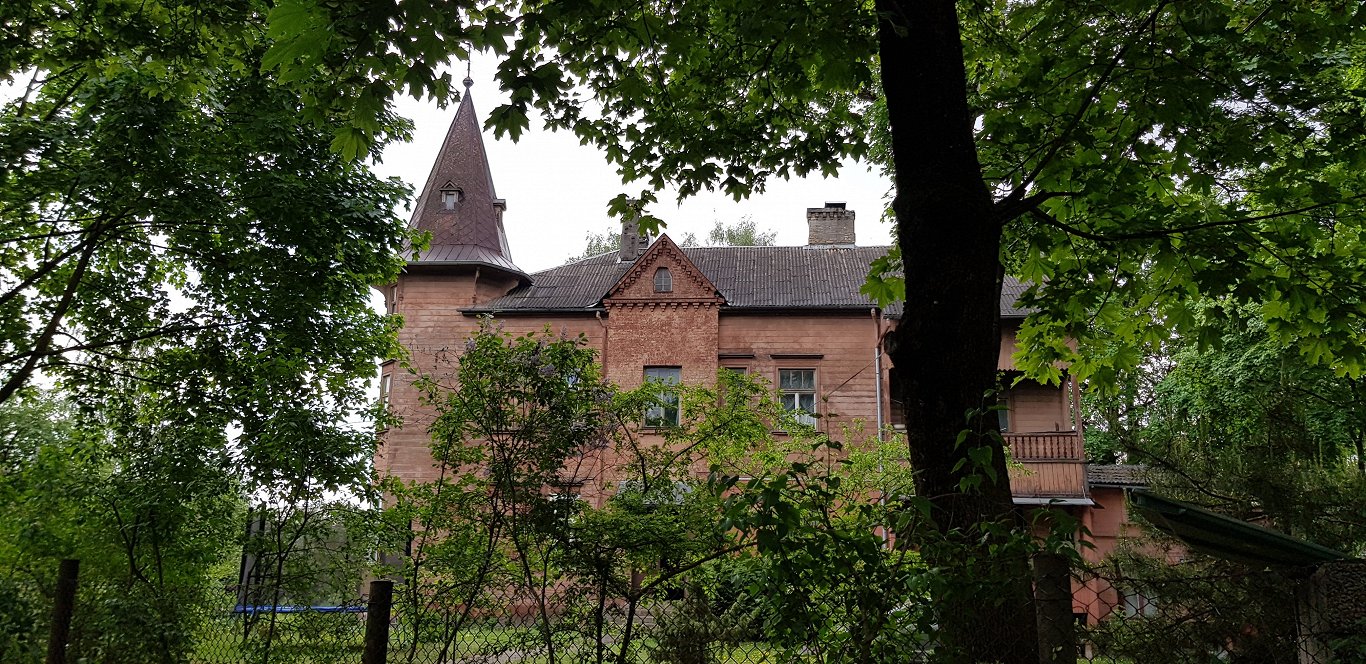The street first appears on the map in 1861 as Mazā Lēģeru iela because of the summer camps of Riga Garrison soldiers which happened to be situated on the other side of the Māra pond. An old road, which had already been named Nometņu iela in the 19th century, leads to it from the Āgenskalns ferry port. Mazā Nometņu iela winds down from the Arkādija park, past the Māra pond and the Mazā Arkādija garden, then climbs up the mountain to meet Nometņu iela at the current Āgenskalns market. From there, its course can be followed by boarding the number 2 tram, which weaves past the facades of the rubber factory to the four-street junction, where the street leaves the tram rails to turn swiftly in the direction of the railroad and, crossing it, runs into the Kalnciema overpass.
The second half of the 19th century saw an increase in the number of factories in Pārdaugava, and their workers needed accommodation. Clusters of two-storey wooden rental houses have to this day survived throughout the whole length of Mazā Nometņu iela, often facing or huddling against rental homes built in the inter-war and Soviet eras, or even impressive pre-war private houses and newly-built 21st century projects.
Nowadays, there are no more factories apart from a few small businesses on Mazā Nometņu iela. But the proletarian past of the street has impressed itself on the minds of several generations.
The rubber factory was in full operation until the 90's, while the factory owner Johann Wilhelm Muendel's beautiful villa (the project of architect Edmund von Trompowsky) and the closed park were remade in the Soviet era to accommodate the workers. Now the building is a private property, and the city has reclaimed the park, assigning it the name of the city of Kobe in Japan, with which Riga has been in official partnership since 1974. Gumijas iela and several buildings on Nometņu iela, as well as the new production blocks erected on Mazā Nometņu iela all evoke memories of the factory's past.
In 1905, the workers of the rubber factory mounted campaigns for worker's rights, and Mazā Nometņu iela became the residence of quite a few prominent social-democrats. Some built impressive houses near the Māra pond, whereas Konārds Pētersons, renowned engineer and revolutionary, chose a humbler abode not far from the Kalnciema overpass.
“The marks of war can be seen on both houses and people,” said a resident of Mazā Nometņu iela. Tragic events surround not only the “Holms&Co” territory near the Māra pond where, during a Soviet air-raid in September 1944, 40 boys enlisted into the Air Force auxiliary service met their deaths, but every house and yard.
The residents of Āgenskalns recently established the Āgenskalns Neighbourhood Association, realizing that they had to work together to defend their area. While the notion of “Green Āgenskalns” is being formally touted everywhere, the community of Mazā Nometņu iela has access to only a few green oases. Several years ago, the residents protested when plans to build around the Mazā Arkādija park were made public. At the time, the city promised to negotiate with the owners and appropriate the space for public use, but the solution has stuck in the corridors of power. Now the same fate awaits the little square between Zeļļu and Mazā Nometņu iela, which serves as a green space for a whole block of houses and is the shortest way to the local primary school and post-office. Besides defending the trees of the square, the association is also thinking of ways to make the intricate junction at the Āgenskalns market safer and more attractive.
Āgenskalns has always been the home of a very diverse and colorful public, and even now the attractiveness of the neighbourhood lies in its diversity, which defines its buildings and lifestyles as well as its residents. The reasons why people choose to live on Mazā Nometņu iela are just as varied. For some, it is a stroke of fate. For others, the search for a quieter and greener environment, or the sense of security rooted in past generations.
The far end of Mazā Nometņu iela near the Kalnciema overpass is a bit sequestered from the rest of the street, but the road across the railway is well-trodden and constitutes a much needed footpath. The residents are therefore concerned about the development of the “Rail Baltica” project, which is going to seriously affect Āgenskalns.


























